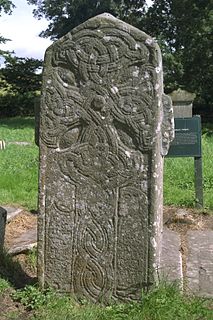 W
WÁed Uaridnach was an Irish king who was High King of Ireland. He is sometimes also known as Áed Allán, a name most commonly used for the 8th-century king of the same name, this Áed's great-great-grandson.
 W
WAidan of Lindisfarne was an Irish monk and missionary credited with converting the Anglo-Saxons to Christianity in Northumbria. He founded a monastic cathedral on the island of Lindisfarne, known as Lindisfarne Priory, served as its first bishop, and travelled ceaselessly throughout the countryside, spreading the gospel to both the Anglo-Saxon nobility and the socially disenfranchised.
 W
WSt. Begnet, also Begneta, Begnete, Begnait or Becnait is a patron saint of Dalkey, Ireland. She is noted as a "virgin, not a martyr." Her feast day is November 12. Two ruined churches in Dalkey are named for Begnet, one on Dalkey Island, and the other near the 15th-century stone townhouse now serving as Dalkey Castle and Heritage Centre, in the area known as Kilbegnet. A holy well located near the martello tower on the island is also associated with her; as the Irish playwright Hugh Leonard observed:A few yards away are the ruins of a church supposedly built by the town's patron saint, St. Begnet. Like St. Patrick himself, St. Begnet may never have existed: There is even uncertainty as to whether he or she was male or female. No one bothers to argue about this: In Dalkey, when it is a question of sainthood, sex is hardly likely to have much relevance.
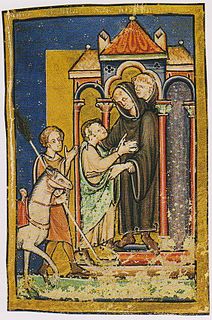 W
WSaint Boisil was a monk of Melrose Abbey, an offshoot of Lindisfarne, then in the Anglo-Saxon Kingdom of Northumbria, but now in Scotland, where he must have been one of the first generation of monks. He probably moved to the new foundation of Melrose when it was started, probably some time in the late 640s.
 W
WSaint Catald of Taranto, Irish monk, fl. 7th century.
 W
WSaint Colman or Kolonat was an Irish-born Christian missionary. He was a companion of Kilian and Totnan as missionaries to Franconia. The Saint Colman's day feast is celebrated on October 27.
 W
WColmán of Lindisfarne also known as Saint Colmán was Bishop of Lindisfarne from 661 until 664.
 W
WColumbanus was an Irish missionary notable for founding a number of monasteries after 590 in the Frankish and Lombard kingdoms, most notably Luxeuil Abbey in present-day France and Bobbio Abbey in present-day Italy.
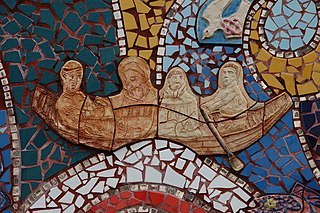 W
WSaint Comgall, an early Irish saint, was the founder and abbot of the great Irish monastery at Bangor in Ireland.
 W
WSaint Conval (Conwall) was an Irish-born missionary who, when pondering his vocation, was carried by the stone he stood on across the Irish Sea to Inchinnan in Scotland. He was active in the Kingdom of Strathclyde in the area of East Renfrewshire, where there were “Conval wells” in Barrhead and Thornliebank. He is believed to have founded churches at Inchinnan, Pollokshaws and Fereneze. His bones were preserved in an impressive sarcophagus at the Inchinnan church.
 W
WSaint Deicolus is venerated as a saint by both the Catholic Church and the Orthodox Church as an East–West Schism, pre-Schism, Western saint. He was an elder brother of Saint Gall.
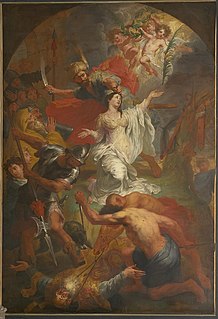 W
WSaint Dymphna is a Christian saint honoured in Catholic and Orthodox traditions. According to tradition, she lived in the 7th century. She was murdered by her father.
 W
WSaint Erhard of Regensburg was bishop of Regensburg in the 7th century. He is identified with an Abbot Erhard of Ebersheimmunster mentioned in a Merovingian diploma of 684. Ancient documents call him also Erard and Herhard.
 W
WSaint Féchín or Féichín, also known as Mo-Ecca, was a 7th-century Irish saint, chiefly remembered as the founder of the monastery at Fore (Fobar), County Westmeath.
 W
WSaint Fiacre is the name of three different Irish saints, the most famous of which is Saint Fiacre of Breuil, the Catholic priest, abbot, hermit, and gardener of the seventh century who was famous for his sanctity and skill in curing infirmities. He emigrated from his native Ireland to France, where he constructed for himself a hermitage together with a vegetable and herb garden, oratory, and hospice for travellers. He is the patron saint of gardeners.
 W
WSaint Finbar, Finnbar, or Finnbarr, in Irish Fionnbharra, very often abbreviated to Barra, was Bishop of Cork and abbot of a monastery in what is now Cork city, Ireland. He is patron saint of the city and of the Diocese of Cork. His feast day is September 25.
 W
WSaint Foillan is an Irish saint of the seventh century.
 W
WSaint Fursey was an Irish monk who did much to establish Christianity throughout the British Isles and particularly in East Anglia. He reportedly experienced angelic visions of the afterlife. Fursey is one of the Four Comely Saints.
 W
WSaint Gall, or Gallus according to hagiographic tradition was a disciple and one of the traditional twelve companions of Saint Columbanus on his mission from Ireland to the continent. Saint Deicolus was the elder brother of Gall.
 W
WSaint Gobain, also known as Goban, was an Irish monk and spiritual student of Saint Fursey at Burgh Castle, Norfolk, England.
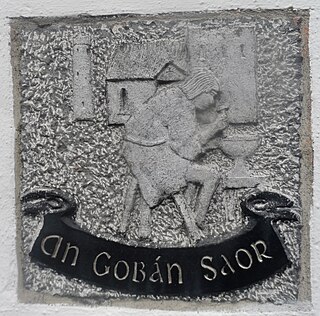 W
WThe Gobán Saor was a highly skilled smith or architect in Irish history and legend. Gobban Saer is a figure regarded in Irish traditional lore as an architect of the seventh century, and popularly canonized as St. Gobban. The Catholic Encyclopedia considers him historical and born at Turvey, on the Donabate peninsula in North County Dublin, about 560.
 W
WSt Gobhan has long been historically linked with the parish of Seagoe – Teach dho-Ghobha in County Armagh, Ireland. A St Gobban - Gobban find mac Lugdach, was primarily known for his abbacy of the monastery of Oldleighlin, County Carlow, where in 633 an important synod was held to debate the timing of Easter. This monastery later evolved into St Laserian's Cathedral, Old Leighlin. St. Gobban also held authority at Killamery – Cell Lamraide in county Kilkenny. St Gobban died in 639 and was buried in either the ancient abbey of Clonenagh: Cluain-Ednech, County Laois or Clooneagh: Chluain Each, County Kerry.
 W
WSaint Kevin is an Irish saint, known as the founder and first abbot of Glendalough in County Wicklow, Ireland. His feast day is 3 June.
 W
WSaint Kilian, also spelled Killian, was an Irish missionary bishop and the Apostle of Franconia, where he began his labours towards the end of the 7th century. His feast day is 8 July.
 W
WSaint Livinus, also Livinus of Ghent, was an apostle in Flanders and Brabant, venerated as a saint and martyr in Catholic tradition and more especially at the Saint Bavo Chapel, Ghent. His feast day is 12 November.
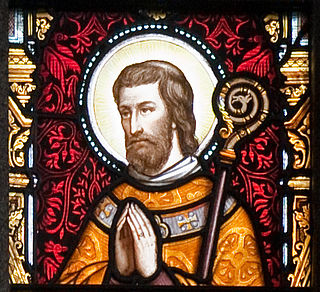 W
WSaint Máedóc, also known as Mogue and Aidan, was an Irish saint, founder and first bishop of Ferns in County Wexford and a patron of other churches, such as Rossinver in County Leitrim and Drumlane in County Cavan.
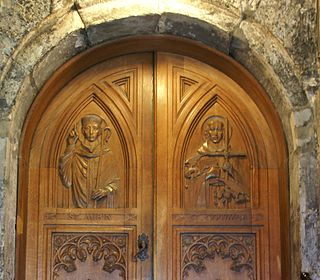 W
WSaint Mirin or Mirren, an Irish monk and missionary, is also known as Mirren of Benchor, Merinus, Merryn and Meadhrán. The patron saint of the town and Roman Catholic diocese of Paisley, Scotland, he was the founder of a religious community which grew to become Paisley Abbey. The shrine of this saint in the abbey became a centre of pilgrimage.
 W
WSaint Mo Chutu mac Fínaill, also known as Mochuda, Carthach or Carthach the Younger, was abbot of Rahan, County Offaly and subsequently, founder and first abbot of Lismore, County Waterford. The saint's Life has come down in several Irish and Latin recensions, which appear to derive from a Latin original written in the 11th or 12th century.
 W
WMo Sinu moccu Min, also known as Sinilis, Sinlán Moccu Mín was an Irish scholar.
 W
WSaint Molaise of Leighlin, also Laisrén or Laserian, was an early Irish saint and abbot of Lethglenn or Leithglenn, now Old Leighlin in Co. Carlow, who is supposed to have lived in the 6th and 7th centuries.
 W
WSaint Mo Ling (614–697), also named Moling Luachra, was the second Bishop of Ferns in Ireland and has been said to be "one of the four great prophets of Erin". He founded a monastery at St Mullin's, County Carlow. His feast day is 17 June.
 W
WSaint Rumbold was an Irish or Scottish Christian missionary, although his true nationality is not known for certain. He was martyred near Mechelen by two men, whom he had denounced for their evil ways.
 W
WSaint Sillan was early Irish saint and abbot of Bangor Abbey, Bangor, County Down. He was recorded as being a disciple and second or third successor of Saint Comgall, who was the founder and first abbot of the Benedictine monastery at Bangor. The village of Kilsheelan, County Tipperary is named after him. His Irish name is Sioláin which can translate to either "seed-basket" or "cullender/sieve".
 W
WSaint Totnan an Irish Franconian apostle. He was born in Ireland and was martyred along with Saint Colman and Saint Kilian in Würzburg around 689. His feast day is July 8.
 W
WUrsicinus was an Irish missionary and hermit in the Jura region.
 W
WVincent Madelgarius, aka Maelceadar, Benedictine monk, died 677. His feast day is September 20.